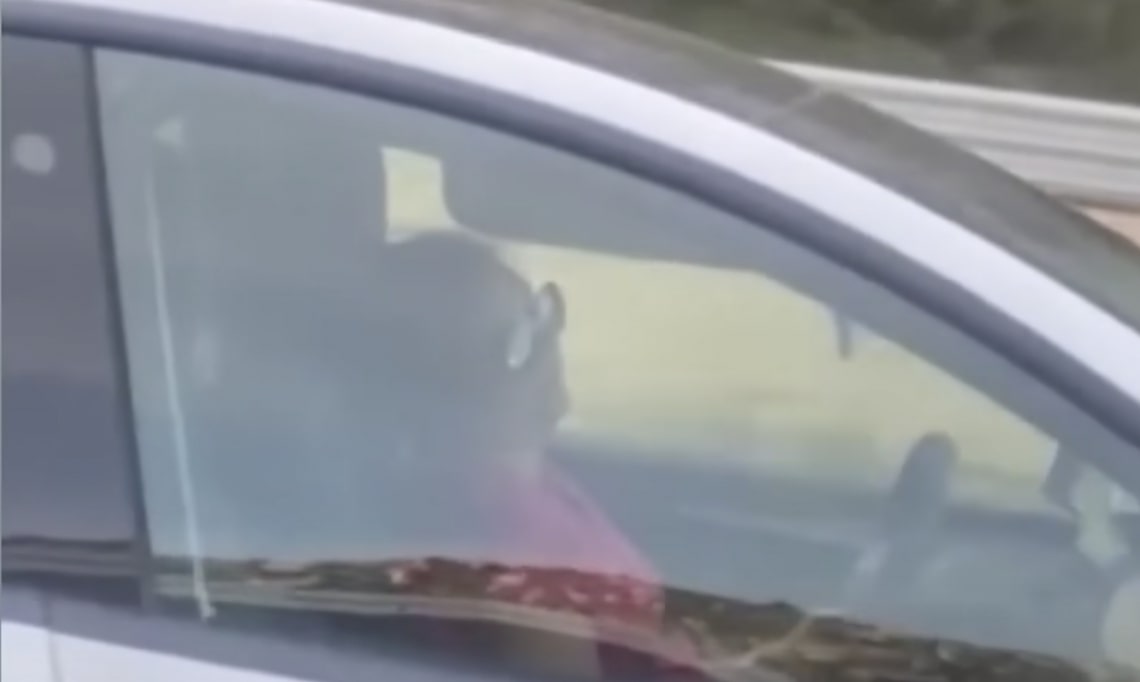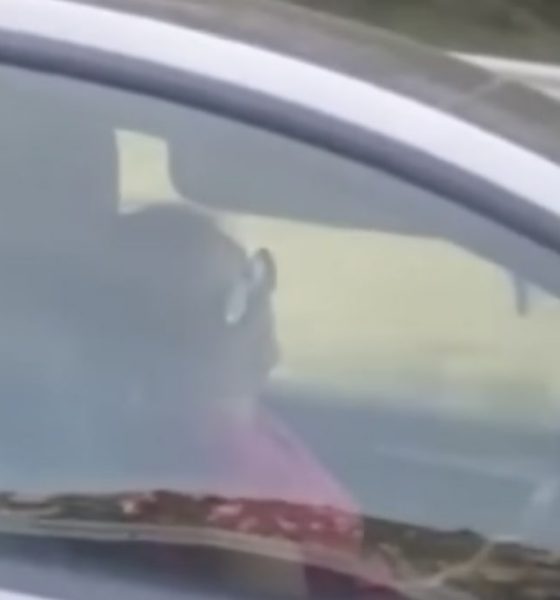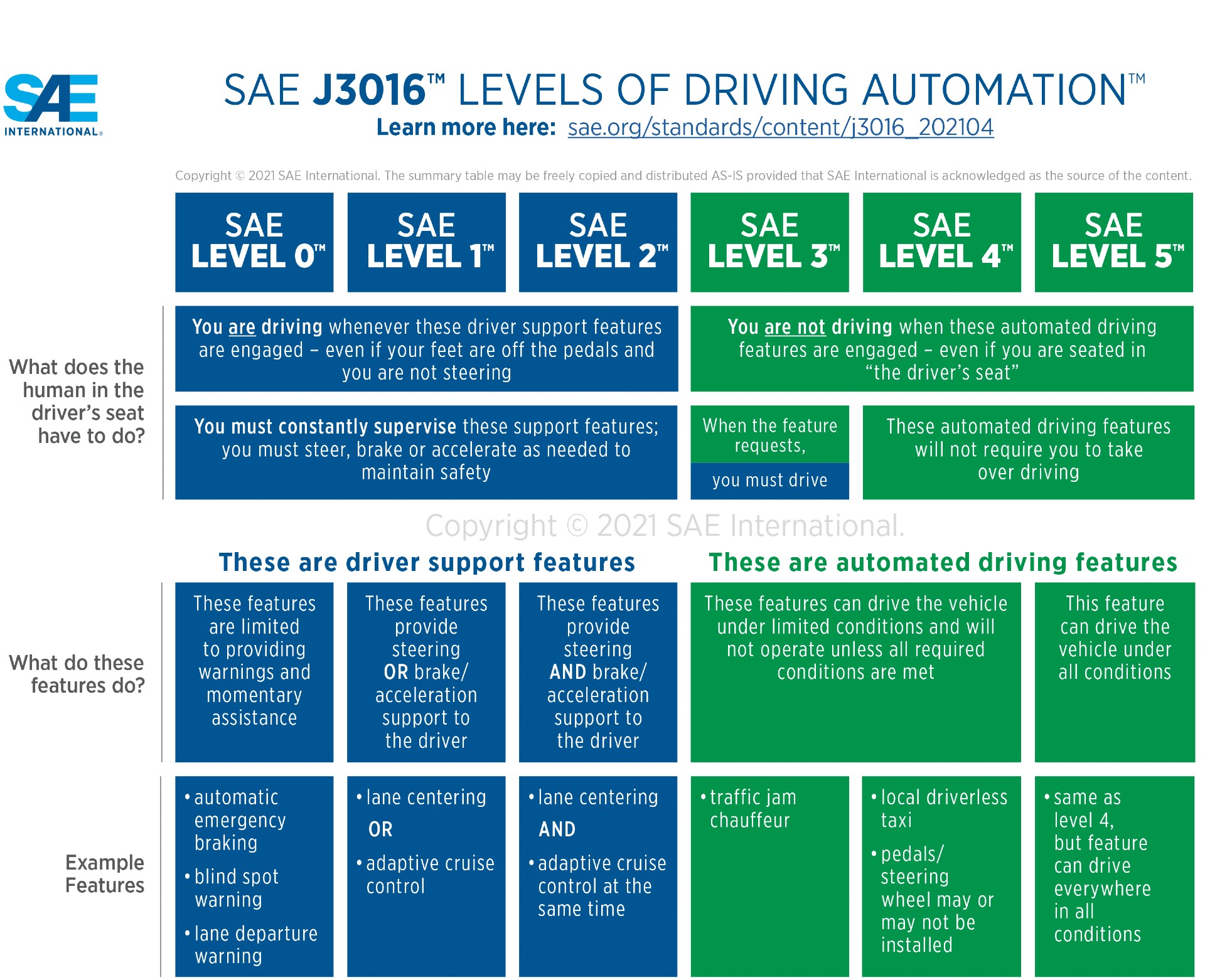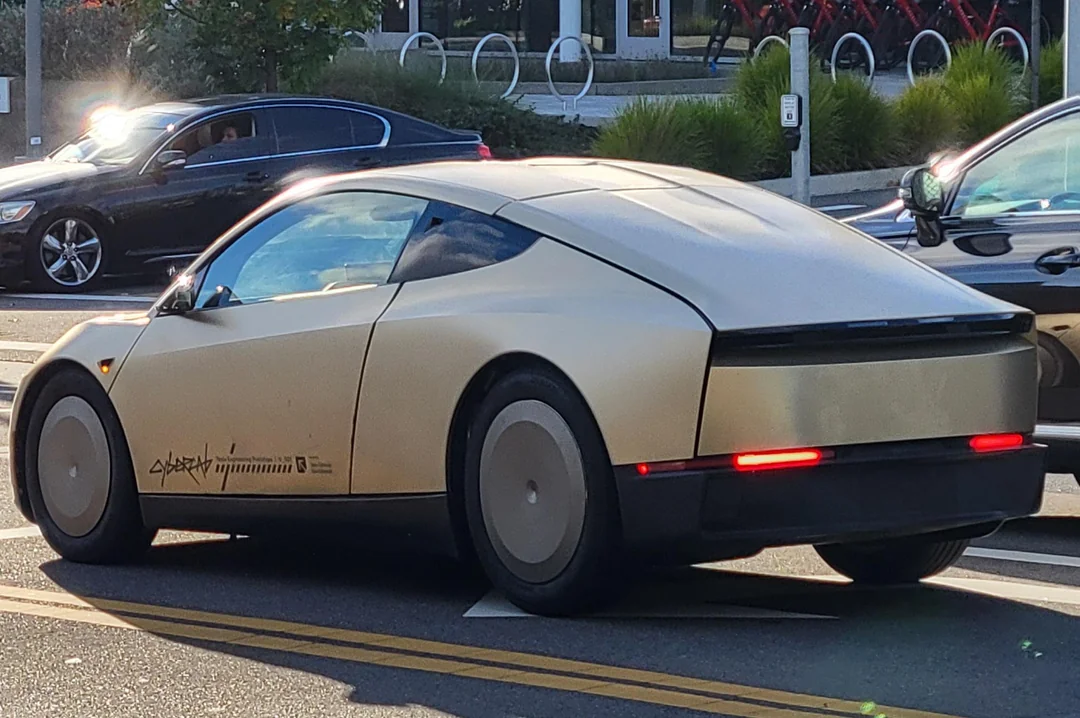

News
Tesla with sleeping driver proves there’s still misunderstanding and irresponsibility surrounding autonomy
Update: 11:06 AM EST: Paragraph 7 added to show the probability of the driver having a medical emergency. California Highway Patrol saw the vehicle and noted the driver was awake after catching up to the car.
A Tesla Model Y with a sleeping driver was recently spotted on the I-15 Freeway near Temecula, California, which proves that people and media still have a vast misunderstanding and irresponsible tone regarding the capabilities of semi-autonomous vehicles.
According to a report from KTLA 5, a woman in a Tesla Model Y was followed by another driver for more than fifteen minutes on the California interstate in an attempt to wake the woman who was taking advantage of the automaker’s semi-autonomous driving functions up.
The report and the incident prove there are still huge misunderstandings in the capabilities of semi-autonomous driving suites, including Tesla’s Full Self-Driving and Autopilot, which require users to remain vigilant and be prepared to take over the vehicle at any point.
Drivers utilize semi-autonomous vehicle functionalities irresponsibly often, and social media has proven time and time again that people take advantage of the capabilities, even though they are not fully autonomous.
It is no secret that people and companies have utilized whatever they can to alleviate themselves of the responsibility of paying attention while the car operates some tasks on its own. With the introduction of advanced driver assistance systems (ADAS) over the past several years, drivers have taken advantage of the functions to instead play on their phones, read books, eat food, or even catch up on sleep.
Tesla’s camera-based driver monitoring system goes through the cellphone test
However, the risks that come with this behavior are potentially catastrophic. For one, those who use these functions irresponsibly put themselves and every other driver on the road at risk because if the vehicle needs assistance or encounters a situation where it would not react safely, the driver is responsible for taking over. Additionally, if an accident occurs, it can be framed as Tesla’s, or any other manufacturer’s fault, depending on the vehicle used, and instances like this can set the future of semi-autonomous and autonomous driving back years due to skepticism.
There is the possibility that the driver had some type of medical emergency or accidentally fell asleep, in which the Tesla’s functionalities kept the operator and others safe. Police stated the driver was caught up to two minutes after receiving calls about the driver, and the driver was attentive at this time.
However, the media’s portrayal of the situation also proves that many are widely uninformed regarding the capabilities of Teslas. While Tesla’s Full Self-Driving suite has caused controversy over its name, the automaker continues to remind those who use it to remain vigilant, as the cars cannot truly drive themselves.
In Tesla’s FAQ section of the Autopilot and Full Self-Driving page, the company answers the question, “Do I still need to pay attention while using Autopilot?:”
“Yes. Autopilot is a hands-on driver assistance system that is intended to be used only with a fully attentive driver. It does not turn a Tesla into a self-driving car nor does it make a car autonomous.
Before enabling Autopilot, you must agree to “keep your hands on the steering wheel at all times” and to always “maintain control and responsibility for your car.” Once engaged, Autopilot will also deliver an escalating series of visual and audio warnings, reminding you to place your hands on the wheel if insufficient torque is applied. If you repeatedly ignore these warnings, you will be locked out from using Autopilot during that trip.
You can override any of Autopilot’s features at any time by steering, applying the brakes, or using the cruise control stalk to deactivate.”
Media labeling the vehicle as “a self-driving Tesla” is a disservice to people and the company. Teslas do not drive themselves, as the vehicles are defined as Level 2, according to the Society of Automotive Engineers Levels of Driving Automation. Level 2 systems reiterate that the driver is still responsible for driving the car when these systems are activated. “You must constantly supervise these support features,” the SAE says. Level 3 to Level 5 systems maintain that the operator is not driving the car, but Level 5 systems are the only ones that are explicitly labeled as “self-driving.”
“This feature can drive the vehicle under all conditions,” the SAE table states.
Credit: Society of Automotive Engineers
Recent ratings by Consumer Reports showed that Tesla’s biggest flaw was driver monitoring. Many systems use cabin-facing cameras to monitor eye behavior to ensure the operator is keeping their eyes on the road. Teslas use a series of audible and visual cues to alert drivers of their inattentiveness, and steering wheel sensors make sure the driver keeps their hands on the wheel.
However, various cheat devices have been marketed across the internet, and in this instance, the driver appears to have their hands on the wheel while they are dozed.
Tesla activated camera-based driver monitoring in May 2021. “The cabin camera above your rearview mirror can now detect and alert driver inattentiveness while Autopilot is engaged,” Tesla said in the notes. Tests of Tesla’s driver monitoring tests showed the system was effective in some instances, especially when looking at cell phones, with alerts coming in 15 seconds.
The potential irresponsibility of users puts major risks to those on the road and the companies that develop these driver assistance programs. While there are workarounds through the previously-mentioned cheat devices, people have to know their irresponsibility could cost them, or others, their lives.
I’d love to hear from you! If you have any comments, concerns, or questions, please email me at joey@teslarati.com. You can also reach me on Twitter @KlenderJoey, or if you have news tips, you can email us at tips@teslarati.com.

News
Tesla Model 3 named New Zealand’s best passenger car of 2025
Tesla flipped the switch on Full Self-Driving (Supervised) in September, turning every Model 3 and Model Y into New Zealand’s most advanced production car overnight.

The refreshed Tesla Model 3 has won the DRIVEN Car Guide AA Insurance NZ Car of the Year 2025 award in the Passenger Car category, beating all traditional and electric rivals.
Judges praised the all-electric sedan’s driving dynamics, value-packed EV tech, and the game-changing addition of Full Self-Driving (Supervised) that went live in New Zealand this September.
Why the Model 3 clinched the crown
DRIVEN admitted they were late to the “Highland” party because the updated sedan arrived in New Zealand as a 2024 model, just before the new Model Y stole the headlines. Yet two things forced a re-evaluation this year.
First, experiencing the new Model Y reminded testers how many big upgrades originated in the Model 3, such as the smoother ride, quieter cabin, ventilated seats, rear touchscreen, and stalk-less minimalist interior. Second, and far more importantly, Tesla flipped the switch on Full Self-Driving (Supervised) in September, turning every Model 3 and Model Y into New Zealand’s most advanced production car overnight.
FSD changes everything for Kiwi buyers
The publication called the entry-level rear-wheel-drive version “good to drive and represents a lot of EV technology for the money,” but highlighted that FSD elevates it into another league. “Make no mistake, despite the ‘Supervised’ bit in the name that requires you to remain ready to take control, it’s autonomous and very capable in some surprisingly tricky scenarios,” the review stated.
At NZ$11,400, FSD is far from cheap, but Tesla also offers FSD (Supervised) on a $159 monthly subscription, making the tech accessible without the full upfront investment. That’s a game-changer, as it allows users to access the company’s most advanced system without forking over a huge amount of money.
News
Tesla starts rolling out FSD V14.2.1 to AI4 vehicles including Cybertruck
FSD V14.2.1 was released just about a week after the initial FSD V14.2 update was rolled out.

It appears that the Tesla AI team burned the midnight oil, allowing them to release FSD V14.2.1 on Thanksgiving. The update has been reported by Tesla owners with AI4 vehicles, as well as Cybertruck owners.
For the Tesla AI team, at least, it appears that work really does not stop.
FSD V14.2.1
Initial posts about FSD V14.2.1 were shared by Tesla owners on social media platform X. As per the Tesla owners, V14.2.1 appears to be a point update that’s designed to polish the features and capacities that have been available in FSD V14. A look at the release notes for FSD V14.2.1, however, shows that an extra line has been added.
“Camera visibility can lead to increased attention monitoring sensitivity.”
Whether this could lead to more drivers being alerted to pay attention to the roads more remains to be seen. This would likely become evident as soon as the first batch of videos from Tesla owners who received V14.21 start sharing their first drive impressions of the update. Despite the update being released on Thanksgiving, it would not be surprising if first impressions videos of FSD V14.2.1 are shared today, just the same.
Rapid FSD releases
What is rather interesting and impressive is the fact that FSD V14.2.1 was released just about a week after the initial FSD V14.2 update was rolled out. This bodes well for Tesla’s FSD users, especially since CEO Elon Musk has stated in the past that the V14.2 series will be for “widespread use.”
FSD V14 has so far received numerous positive reviews from Tesla owners, with numerous drivers noting that the system now drives better than most human drivers because it is cautious, confident, and considerate at the same time. The only question now, really, is if the V14.2 series does make it to the company’s wide FSD fleet, which is still populated by numerous HW3 vehicles.
News
Waymo rider data hints that Tesla’s Cybercab strategy might be the smartest, after all
These observations all but validate Tesla’s controversial two-seat Cybercab strategy, which has caught a lot of criticism since it was unveiled last year.

Toyota Connected Europe designer Karim Dia Toubajie has highlighted a particular trend that became evident in Waymo’s Q3 2025 occupancy stats. As it turned out, 90% of the trips taken by the driverless taxis carried two or fewer passengers.
These observations all but validate Tesla’s controversial two-seat Cybercab strategy, which has caught a lot of criticism since it was unveiled last year.
Toyota designer observes a trend
Karim Dia Toubajie, Lead Product Designer (Sustainable Mobility) at Toyota Connected Europe, analyzed Waymo’s latest California Public Utilities Commission filings and posted the results on LinkedIn this week.
“90% of robotaxi trips have 2 or less passengers, so why are we using 5-seater vehicles?” Toubajie asked. He continued: “90% of trips have 2 or less people, 75% of trips have 1 or less people.” He accompanied his comments with a graphic showing Waymo’s occupancy rates, which showed 71% of trips having one passenger, 15% of trips having two passengers, 6% of trips having three passengers, 5% of trips having zero passengers, and only 3% of trips having four passengers.
The data excludes operational trips like depot runs or charging, though Toubajie pointed out that most of the time, Waymo’s massive self-driving taxis are really just transporting 1 or 2 people, at times even no passengers at all. “This means that most of the time, the vehicle being used significantly outweighs the needs of the trip,” the Toyota designer wrote in his post.
Cybercab suddenly looks perfectly sized
Toubajie gave a nod to Tesla’s approach. “The Tesla Cybercab announced in 2024, is a 2-seater robotaxi with a 50kWh battery but I still believe this is on the larger side of what’s required for most trips,” he wrote.
With Waymo’s own numbers now proving 90% of demand fits two seats or fewer, the wheel-less, lidar-free Cybercab now looks like the smartest play in the room. The Cybercab is designed to be easy to produce, with CEO Elon Musk commenting that its product line would resemble a consumer electronics factory more than an automotive plant. This means that the Cybercab could saturate the roads quickly once it is deployed.
While the Cybercab will likely take the lion’s share of Tesla’s ride-hailing passengers, the Model 3 sedan and Model Y crossover would be perfect for the remaining 9% of riders who require larger vehicles. This should be easy to implement for Tesla, as the Model Y and Model 3 are both mass-market vehicles.









